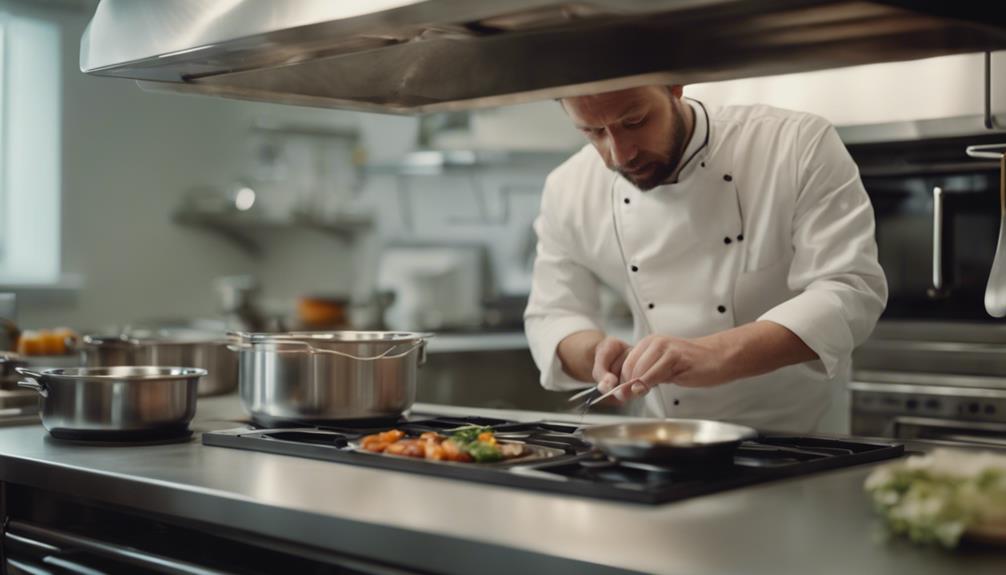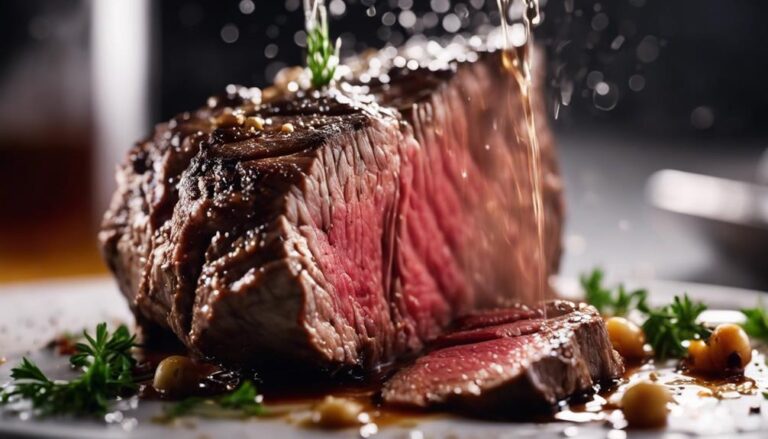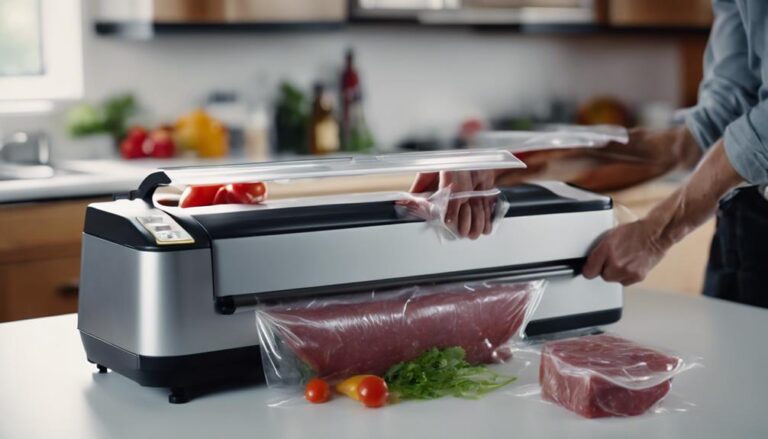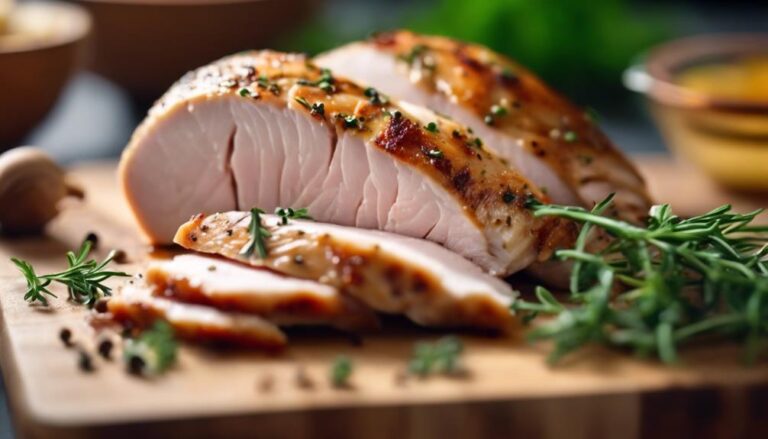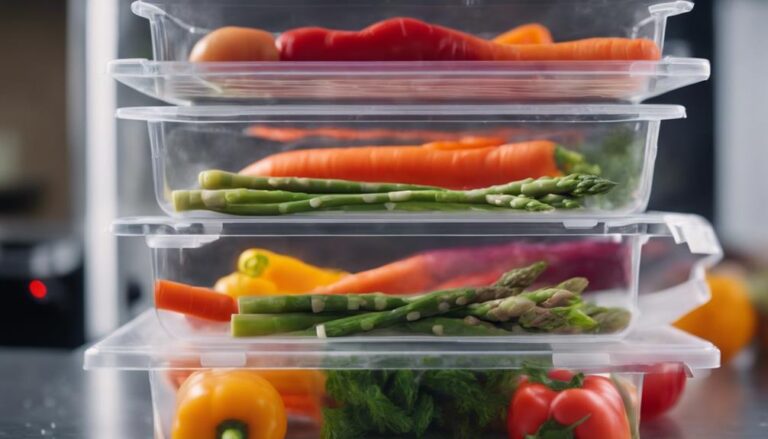Navigating Your First Cook: Temperature, Time, and Testing
When you start cooking for the first time, remember to check temperatures carefully. Cook meats like poultry to 165°F, ground beef to 155°F, and seafood to 145°F. A thermometer is essential for accurate results. Follow recommended cooking times and look for visual cues like color and texture. Keep your kitchen clean by washing hands and using separate cutting boards. Prioritize food safety by storing meat correctly and understanding safe cooking practices. By focusing on these key points, you'll be on the right track to successful and safe cooking right from the start.
What You Will Learn Here
- Use a meat thermometer to ensure meats reach safe internal temperatures.
- Understand recommended cooking times and visual cues for doneness.
- Prioritize kitchen hygiene practices to prevent cross-contamination.
- Follow safe cooking practices by cooking food thoroughly and avoiding contamination.
- Regularly calibrate thermometers for accuracy in temperature readings.
Importance of Cooking Temperatures
Understanding the significance of cooking temperatures is essential for guaranteeing food safety and preventing foodborne illnesses. Cooking temperatures play a critical role in safeguarding the health of those you serve. By cooking food to the recommended temperatures, you effectively eliminate harmful bacteria that could otherwise cause sickness. Different types of food require specific cooking temperatures to reach the desired level of doneness.
Utilizing a food thermometer is the most precise method to confirm if food has been cooked to the appropriate temperature. Embracing cooking temperature guidelines is paramount for upholding food safety standards in any kitchen setting. Remember, when you prioritize cooking temperatures, you not only deliver delicious meals but also demonstrate your dedication to the well-being of those enjoying your culinary creations.
Safe Cooking Temperatures for Meats
When cooking meats, make sure to reach the safe internal temperatures advised for each type of meat.
It's crucial to use a thermometer to accurately gauge when your meat is properly cooked.
Following these guidelines will help guarantee that your meals are safe to eat and free from harmful bacteria.
Meat Temperature Guidelines
To guarantee the safety of your cooked meats, always adhere to specific internal temperature guidelines recommended for each type of meat. Poultry should reach an internal temperature of 165F, while ground beef and pork need to hit 155F. Seafood, beef, pork, veal, and lamb should be cooked to at least 145F to make sure harmful bacteria are eliminated.
Keeping ready-to-eat hot-held food at 135F is essential to prevent bacterial growth. Following these recommended safe cooking temperatures is vital in avoiding foodborne illnesses and maintaining proper food safety. Remember, serving others includes ensuring that the food you prepare isn't only delicious but also safe to eat.
Importance of Thermometer
Ensuring meat is cooked to safe internal temperatures for killing harmful bacteria requires the use of a reliable meat thermometer. Different meats have specific safe cooking temperatures to guarantee they're safe for consumption: poultry and stuffing should reach 165°F, ground meat 155°F, and seafood and most meats 145°F. A meat thermometer is indispensable for accurate readings, preventing the risk of undercooked or overcooked meat.
Proper calibration of the meat thermometer is essential to guarantee food safety and prevent foodborne illnesses. By following the recommended safe cooking temperatures for meats, you can protect against harmful foodborne pathogens, ensuring the safety of those you serve. Remember, a meat thermometer is your essential tool in the kitchen for safe and delicious meals.
Using a Meat Thermometer Effectively
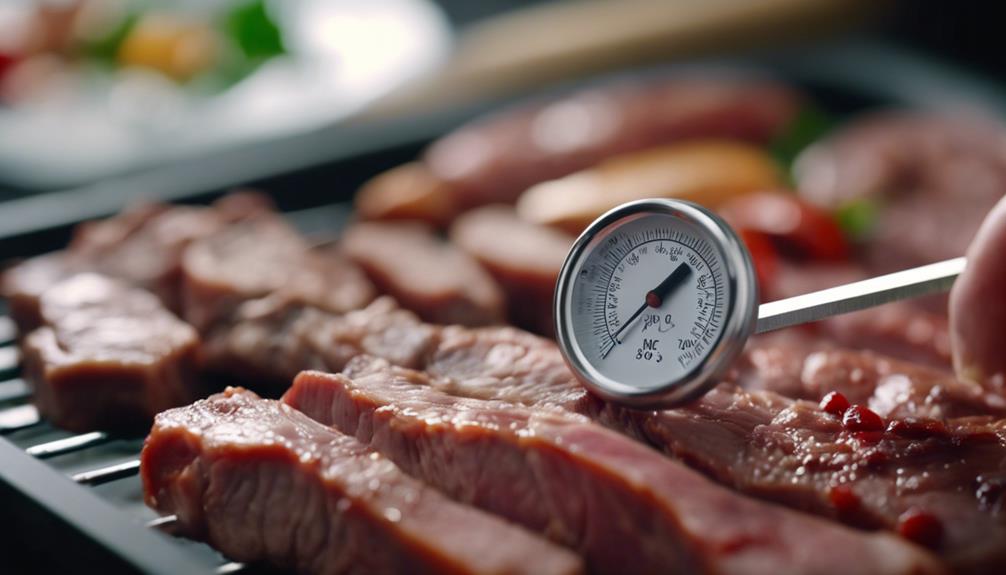
When using a meat thermometer, make sure proper insertion depth into the thickest part of the meat for accurate readings.
Check the calibration of your thermometer to guarantee precise temperature readings.
Wait for the temperature to stabilize to get an exact measurement and avoid under or overcooking your meat.
Proper Insertion Depth
For an accurate temperature reading, always insert the meat thermometer probe into the thickest part of the meat. Make sure the thermometer tip doesn't touch bone, fat, or gristle for precise results. In the case of thin cuts, insert the thermometer at an angle to get an accurate reading. Wait a few seconds after insertion to let the temperature stabilize before taking a reading. Different meats may require specific insertion depths, so follow guidelines accordingly. Here's a table to help you understand the proper insertion depth for different meats:
| Meat Type | Insertion Depth | Angle for Thin Cuts |
|---|---|---|
| Beef | 2-2.5 inches | Yes |
| Chicken | 2 inches | No |
| Pork | 1.5-2 inches | Yes |
Reading Accuracy Calibration
To ensure accurate temperature readings, it's important to calibrate your meat thermometer effectively, starting with testing its accuracy in ice water.
Ensuring your thermometer is essential for maintaining food safety standards. Inaccurate readings could result in undercooked or overcooked food, leading to potential foodborne illnesses.
Calibrating your thermometer, if necessary, helps in accurately determining cooking temperatures and promotes safe food handling practices. By regularly checking and adjusting your thermometer's accuracy, you can enhance the quality of your cooking while prioritizing the well-being of those you serve.
Understanding Recommended Cooking Times
To guarantee safety and proper cooking, understanding the recommended cooking times is essential for different types of food, especially meats and seafood. Poultry, such as chicken and turkey, should always be cooked to an internal temperature of 165F to make sure any harmful bacteria are eliminated.
Ground meats like beef and pork must reach a minimum internal temperature of 155F to be safe for consumption. Seafood, along with beef, pork, veal, and lamb, should be cooked to at least 145F to eliminate any potential bacteria. Maintaining ready-to-eat hot-held food at a temperature of 135F is crucial to prevent any bacterial growth.
Additionally, food should never be left in the temperature danger zone, which ranges from 41F to 135F, for more than 4 hours to avoid the risk of foodborne illnesses. By following these recommended cooking times, you can make sure that the food you serve is both delicious and safe for consumption.
Visual Cues for Doneness

When determining the doneness of meat and seafood, pay close attention to visual cues such as color, texture, and firmness.
For beef, a rare steak is pink in the center at 120F, while a medium-rare one is slightly pink at 130F. Medium beef cooks to a pinkish-brown at 140F, and medium-well appears mostly brown at 150F.
Pork should have a minimum internal temperature of 145F, or 160F for ground pork.
Lamb can be enjoyed at varying degrees of doneness: medium-rare at 125F, medium at 130F, and medium-well at 145F.
Seafood like fish with fins should reach 145F, while shrimp, lobster, crab, and scallops should be cooked until opaque.
For shellfish like clams, oysters, and mussels, look for open shells and white, opaque flesh as visual cues.
Hygiene Practices in the Kitchen
Practicing good hygiene in the kitchen is essential for preventing foodborne illnesses and ensuring the safety of your meals. Here are some key hygiene practices to keep in mind:
| Hygiene Practice | Importance |
|---|---|
| Wash hands for at least 20 seconds before handling food | Prevents the spread of harmful bacteria and keeps food safe. |
| Use separate cutting boards for different food groups | Avoids cross-contamination and maintains the integrity of your ingredients. |
| Sanitize kitchen surfaces and utensils regularly | Kills germs that could contaminate food during preparation. |
Preventing Cross-Contamination
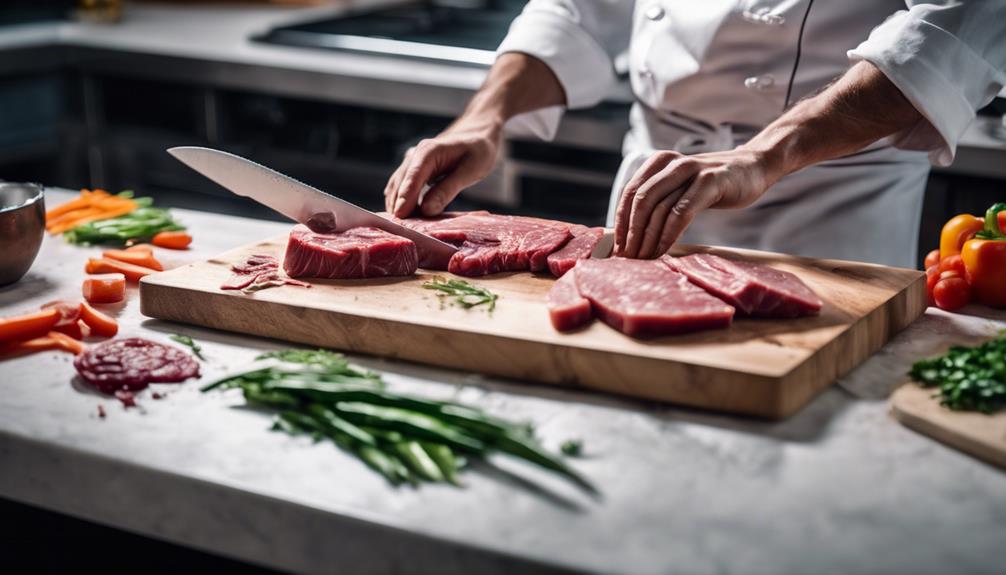
To prevent the spread of harmful bacteria and ensure food safety, be diligent in using separate cutting boards, utensils, and plates for raw meats and ready-to-eat foods. Cross-contamination, where bacteria from raw foods transfer to ready-to-eat foods, can lead to foodborne illnesses if not prevented.
Make sure to wash your hands thoroughly after handling raw meats and before touching other foods to avoid spreading any bacteria. Store raw meats on the lowest shelf in the refrigerator to prevent drips or leaks from contaminating other items.
Implementing color-coded cutting boards or utensils for specific food groups can help reduce the risk of cross-contamination in your kitchen, ensuring safe cooking practices. By taking these simple yet essential steps, you can protect yourself and those you serve from the dangers of foodborne illnesses, promoting a healthy and safe dining experience for all.
Prioritizing Food Safety
To guarantee food safety during your first cook, grasping the significance of cooking food to the correct temperature is essential for preventing foodborne illnesses and promoting consumer safety. Bacteria thrive in the temperature danger zone, between 40°F (4°C) and 140°F (60°C), making it vital to cook food thoroughly to kill harmful pathogens. Different types of food require specific internal temperatures to guarantee they're safe to eat.
Using accurate thermometers and calibrating them regularly is imperative in this process. Proper training on cooking temperatures empowers food handlers to maintain safe food service practices and protect consumers from potential health risks. Additionally, implementing food safety measures like preventing cross-contamination and upholding strict hygiene standards is paramount in reducing the chances of foodborne illnesses.
Frequently Asked Questions
What Is the 4 Hour Rule for Food Safety?
When it comes to food storage, remember the 4 Hour Rule for safety. Perishable items shouldn't linger in the danger zone for more than 4 hours. Be vigilant to prevent harmful bacteria growth.
What Is the Recommended Cooking Time and Temperature?
When cooking, remember to check the recommended temperatures for different foods: poultry, stuffing (165F), ground meat, seafood (155F), and seafood, beef, pork, veal, lamb (145F). Keep ready-to-eat hot food at 135F. Avoid the temperature danger zone.
What Is the Most Reliable Way to Test the Temperature of Cooked Food?
To guarantee temperature accuracy when testing cooked food, utilize a food thermometer. Place it into the thickest part of the food for a dependable reading. This straightforward step aids in avoiding foodborne illnesses and ensures food safety.
How Do You Measure Temperature and Cooking Time When Preparing Food at Home?
To measure temperature accurately and track cooking time at home, use a food thermometer and refer to cooking charts. Adjust cooking time based on your oven's temperature. Test for doneness by checking internal temperature. This guarantees safe, delicious meals.
Conclusion
Now that you have learned about the importance of cooking temperatures, safe cooking temperatures for meats, using a meat thermometer effectively, understanding recommended cooking times, and visual cues for doneness, you're well-equipped to navigate your first cook with confidence.
Hygiene practices in the kitchen, preventing cross-contamination, and prioritizing food safety are essential aspects to keep in mind. Remember to always prioritize food safety and enjoy the delicious meals you create!
